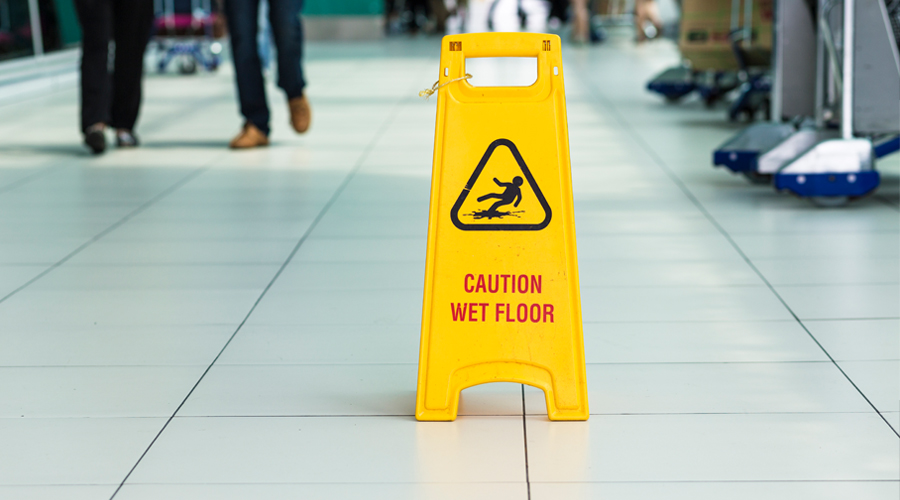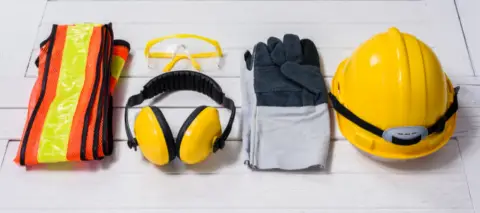Slips, trips, and falls are a significant cause of workplace injury and death. According to the National Safety Council, they account for 15 percent of all accidental deaths per year; second only to motor vehicle accidents.
Slips, trips, and falls can happen practically anywhere, in any workplace. There are a number of unsafe conditions that can lead to these accidents, such as slippery or uneven surfaces, loose or missing flooring, weather hazards, or objects in the way. It’s important for workers to know how to recognize and prevent slip, trip, and fall hazards. Here’s how:
How do slips, trips, and falls happen?
Oftentimes, slips happen because of a loss of traction between the shoe and the walking surface. On the other hand, trips happen when a foot strikes an object and causes the person to lose their balance. Falls happen as result of slip or trip.
How to Prevent Slips, Trips, and Falls:
- Replace burnt-out light bulbs promptly. A properly lit workplace can mean the difference between a safe work area and a serious fall.
- Clean up spills as soon as they happen. If it can’t be cleaned up, be sure to place a wet floor sign out to warn workers. Utilize workplace products that can minimize accidents, such as moisture-absorbent and slip-resistant floor mats and “wet floor” signs.
- Keep walkways and hallways free of debris, clutter, and obstacles, as it can easily cause trip and fall hazards.
- Wearing non-slip shoes can greatly help workers prevent slipping on wet surfaces.
- Pay attention. Worker safety starts by being alert. They need to pay attention to their surrounding, report unsafe conditions and walk carefully in areas where slip, trip, and fall hazards are present.
OHC believes prevention is better than the cure. A safe working environment can protect you and your employees from potentially serious injuries. For more information about how you can create a safe workplace, please give us a call.


